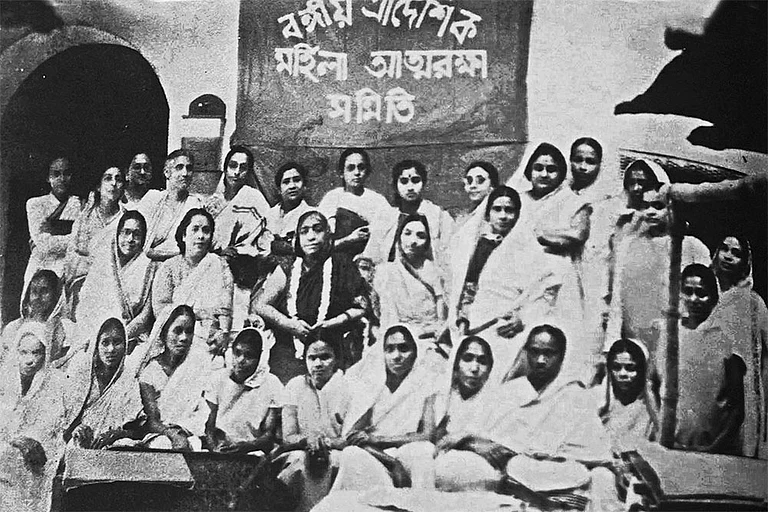Gender stereotypes have played significant roles in shaping societal attitudes and perceptions about men, women and the LGBTQIA+ community. These stereotypes have infiltrated many areas of our lives, and the judicial system is no exception. In an era where gender equality is a paramount goal, the Supreme Court's latest initiative, the "Handbook on Combating Gender Stereotypes," has been recognised as a monumental step towards dismantling deeply ingrained biases in legal judgments.
"The Supreme Court's Handbook is a very progressive step towards addressing issues of inequality and stereotypes. Now, the next focus should be on educating every single citizen about it and conducting campaigns from village to village. Only then will there be a successful outcome in society," says Parveen Gawda, a lawyer.
The handbook of 30 pages, serves as a tool to guide judges and legal professionals in selecting appropriate language and concepts when addressing gender-related issues in court. Chief Justice of India, DY Chandrachud, emphasised that this handbook is not intended to criticise previous judgments. The goal is to assist judges in making unbiased decisions, free from the constraints of prejudiced assumptions. For instance, the handbook suggests replacing terms like 'eve teasing' with 'street sexual harassment,' and 'forcible rape' with 'rape'.
Promoting Inclusive Language
The handbook clearly spells out stereotypes and guides judges on steering clear of them by recognizing language that promotes them. It includes a glossary of such stereotypes and presents substitute terms. Furthermore, it pinpoints prevalent patterns that arise from gender stereotypes, specifically those related to women, and explains their inaccuracies.
As an example, the appropriate alternative for the word "adulteress," is "a woman who has participated in sexual relations outside of marriage." Similarly, the term "bastard," is replaced by the phrase "a non-marital child" or "a child born to parents who were not married."
The handbook states that the term biological sex is replaced by "sex assigned at birth". The alternative of biological female and biological male is "assigned female at birth" and "assigned male at birth," respectively.
It also recommends using the phrase "child who has been trafficked" instead of "child prostitute,". The phrase that replaces the word "concubine" or "keeps" is "woman with whom a man has had romantic or sexual relations outside of marriage".
The handbook further restricts the usage of the word “faggot”, and suggests that the words should “accurately describe the individual’s sexual orientation (e.g., homosexual or bisexual)”
The handbook suggests, the use of the word “woman”, instead of the words like “whore”, “slut” “harlot” or “seductress"; use “sexually harassed/assaulted or raped” instead of “ravished”; “rape” instead of “forcible rape”; and “sex worker” instead of “hooker”.
The handbook serves as evidence that the judicial system has begun to acknowledge the problem and is taking steps toward change. However, the bigger question remains: how will society as a whole transform? Women continue to face judgment based on their clothing choices. Even close family members and in-laws form opinions based on attire. "Stereotypes will only fade when women are free to wear comfortable shorts or dresses in front of their relatives and in-laws. This handbook might not be enough to shift the mindset of the older generation, whose thinking has been deeply influenced by these stereotypical notions," says Udayakumari, a women's rights activist.
On Gender, Identity and Roles
The handbook further deconstructs stereotypes related to gender, identity and gender roles. It clarifies that "gender identity" encompasses more than just a binary classification (female/male or girl/boy) and instead encompasses a wide spectrum that can develop and change over time.
It outlines the primary categories of gender stereotypes that predominantly affect women, which include: (i) stereotypes stemming from supposed 'innate attributes' of women; (ii) stereotypes originating from the gender roles assigned to women; and (iii) stereotypes associated with matters of sex, sexuality, and sexual violence.
It goes on to dispel various misconceptions about women, including notions such as "women are excessively emotional, irrational, and incapable of making decisions," "all women are physically less strong than all men," "all women desire to become mothers," "women should be solely responsible for household tasks," and "women who are also mothers exhibit reduced competence in the workplace due to their focus on childcare."
Kalpana Ramesh, a lawyer and women's rights activist notes that while the handbook about gender stereotypes is important, its impact might be limited. "The bigger question is: how can we make its message reach everyone? Even though the LGBTQ+ community has gained legal recognition, many people still see them as different or not normal. Stereotypes persist, and they'll only disappear when we all start considering everyone as equal and normal. The real change will come when we stop using terms like "gay" or "hijra" to label people. True progress will happen when each person can openly express their sexuality without fear of society's judgment," she says.
Another women's rigght activist expresses concern that these stereotypes have been ingrained in the mindset of society since many decades. "The very fact that women are the only ones expected to leave their homes after marriage highlights the deeply rooted gender inequality. Can this handbook truly alter the perspective of everyone in society? Will men begin to leave their homes after marriage as well? The day this transformation occurs, I believe gender stereotypes will undoubtedly dissipate. However, this change won't happen until then," says Uma Chakravarti, a women's rights activist.
On Sex and Sexual Violence
The handbook specifically addresses prevalent stereotypes related to sex and sexual violence. These stereotypes have often led to unjust perceptions of victims and biased legal outcomes. For instance, the handbook tackles the issue of delayed reporting of sexual offenses. It recognizes the multifaceted reasons behind such delays, including fear and societal stigma. This acknowledgment underscores the need for a nuanced evaluation of delayed complaints.
The handbook also addresses the choice between using the term "survivor" or "victim," and clarifies, "An individual who has experienced sexual violence might choose to refer to themselves as either a 'survivor' or 'victim'. Both terms are suitable unless the person has indicated a preference, in which case, their choice should be honoured."
The handbook presents a descriptive catalog of stereotypes often applied to both men and women in the context of sex and sexual violence, explaining the inaccuracies of such presumptions. For example, it addresses the stereotype that women who don't wear traditional attire are expressing a desire for sexual engagement with men. In response, the handbook clarifies that a "woman's clothing neither signifies her intent for sexual relations nor serves as an invitation for unwarranted advances."
Further, judgments are frequently formed about a woman's character based on her personal choices, including her attire and sexual history. The handbook points out that these presumptions might even influence the evaluation of her words and actions during legal proceedings. However, the handbook firmly asserts, "Assumptions drawn from a woman's character or clothing choices undermine the significance of consent in sexual relationships and disregard the autonomy and humanity of women."
Likewise, it tackles stereotypes such as the notion that "men cannot control their sexual urges," the fallacy that "a man cannot commit rape against a sex worker," the misconception that "able-bodied men have no interest in sexual relations with women with disabilities," and the misguided belief that "rape besmirches the honour of the survivor/victim or her family, which can be restored if the rapist marries her."
Addressing the stereotype that "privileged caste men have no inclination for sexual relations with women from marginalized castes," the handbook notes that "privileged caste men have historically exploited sexual violence to perpetuate and reinforce caste hierarchies."
Furthermore, the handbook proceeds to list instances where the Supreme Court has unequivocally rejected various stereotypes addressed within its contents. These instances encompass judgments disapproving of the "pre-vaginum test" or the "two-finger test," as well as emphasizing the insignificance of a survivor's or victim's sexual history during trials.
It also refers to court decisions to underline the inherent credibility of a survivor's or victim's testimony, and emphasizes that "the absence of visible injuries should be understood within the context of each case." The handbook asserts that courts should refrain from discrediting a survivor's or victim's testimony solely due to the lack of physical injuries.
Similarly, the court has affirmed the legal standpoint that "delays in filing an FIR or complaint cannot be mechanically used to cast doubt."
Legal experts opine that once courts start practicing these methods, the fear around reporting violent crimes might dissipate gradually. "This handbook will undoubtedly encourage women to approach the court and report instances of violence without the fear of humiliation within the courtroom. However, the challenge persists in altering societal attitudes and stereotypes," says Atul Nair, a criminal lawyer.
The handbook emphasizes that as safeguards of the dignity and personal space of all individuals, members of the judiciary bear a distinctive responsibility not only to prevent the continuation of these stereotypes but also to actively question and counter such outdated notions. As the legal system evolves to mirror a more progressive and equitable society, the impact of this initiative promises to be transformative and far-reaching.

























